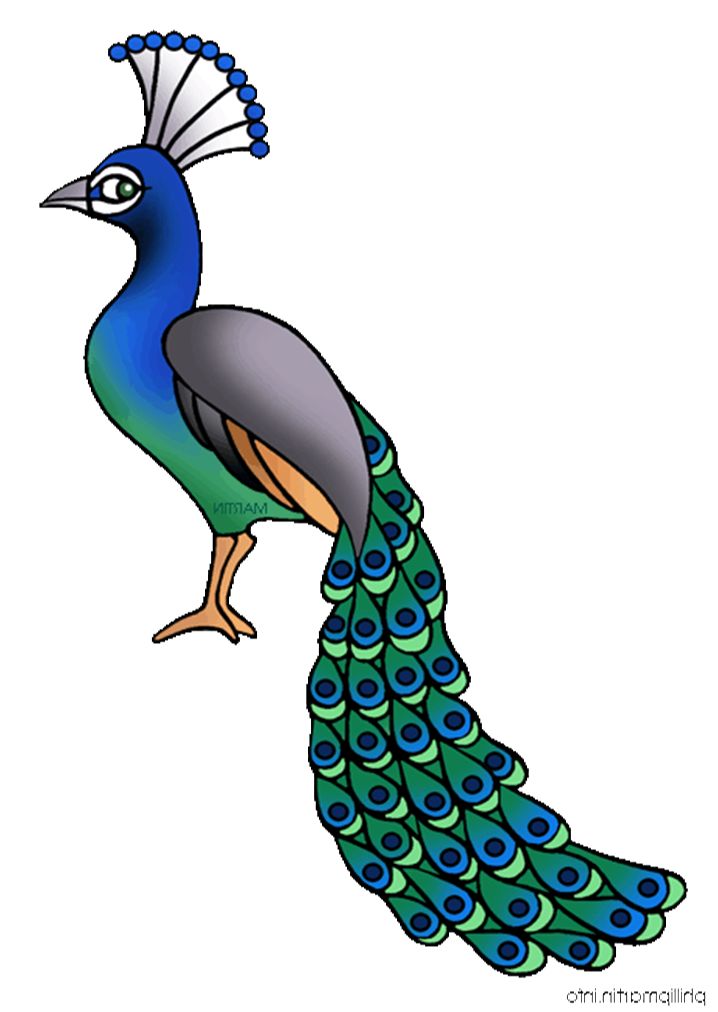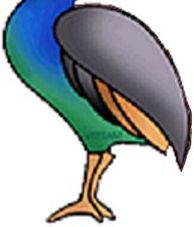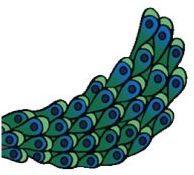|
Chapter 16: PEACOCK PUNCTUATION
How can you cure fragments and comma splices?
What is an easy way to use colons and
semicolons? ---
Introduction--Quick Review of Peacock Sentences
Unforgivable Fragment
Dreaded Comma Splice
Mysterious Semicolon (";")
Common Colon (":")
Conclusion: Three Peacock
Guidelines to Remember
---
Before reading this chapter, please read the earlier
chapter in this section on peacocks: "Peacock Sentences."
It discusses how the English sentence is like a peacock: every sentence in
English has a head and body, and most have additional modifiers, much like a
peacock has tail feathers.
This chapter describes the two most common,
highly-noticeable grammar and punctuation errors in college and professional
English: the unforgivable fragment and the dreaded comma splice.
---
Introduction--Quick Review of
Peacock Sentences
First, remember that writing errors and problems all
are completely acceptable in first rough-draft writing. In
rough-draft writing, your first drafts that are just for yourself, anything
goes: listing, drawing, mapping, even writing without capitals or periods.
Second, in your formal writing, there are some
mistakes that are deadly at
the college level; we'll get to those in a minute. Third, to understand
this chapter properly, you have to know about peacock sentences. If you
haven't read the "Peacock Sentences" chapter, yet, then here is a quick summary: a "peacock sentence" is a complete
sentence in the English language: one with a head (the subject) and a verb (the
body), and likely (though not always) some additional modifying words (the tail
feathers):
|
The peacock
(head
à)
is walking
(body
à)
around the yard,
trailing its feathers
(tail
à
and calling to us.
feathers) |
 |
---
Return to top.
Unforgivable Fragment
There are some unforgivable grammar, spelling, and
punctuation errors at the college and professional level, mistakes that you don't dare let teachers,
colleagues, or supervisors see. These are errors everyone with a college
education can see: obvious mistakes such as using a small letter to start a sentence,
forgetting a period, misspelling a word, and others that could have been corrected if
you had just proofread your work. They result in disrespect, poorer grades,
lower salaries, and less advancement. This is why proofreading carefully is
important.
However, what is the most common major grammar error
that those with a four-year college degree can spot, but you may not yet know
about? It may be the unforgivable fragment. A fragment is an incomplete
sentence. It is missing a subject, a verb, or both. In peacock language, a
fragment looks like each of these three sets of words and phrases that follow,
which are not yet complete sentences (shown in strikethrough red to
indicate they are wrong):
John.
Talked it over. While waiting for you to arrive.
In peacock language, the first is just a head. The second is just a verb phrase.And the third is
only a bunch of modifiers or tail
feathers.
Are you doing it on purpose or by accident? Whether
your intent is to create emphasis, a pause or two, or a casual tone, in formal
professional writing and college English, you just cannot do this. It looks bad and sounds very choppy, and it can be very
confusing.
In peacock language, here is what you are doing:
|
John.
(head or feathers?
à)
|
 |
. |
|
Talked it over.
(body
à)
|
 |
. |
|
Waiting for you to arrive.
(body
à)
|
 |
. |
In short, you have chopped up your peacock into
parts. And a peacock must be kept together in one piece to live, walk, and talk
on your page.
This kind of writing certainly is forgivable and
even very acceptable in three situations: (a) in first-draft writing for your
eyes only; (b) in highly informal, diary-like writing for yourself or very close
friends; and (c) sometimes in creative writing, especially when creating
dialogue. But in formal writing for college or the professions, using it
regularly can be the kiss of death to your grades and your career.
If you have written a fragment, usually you can
solve the problem in two ways: (1) turn it into a complete sentence, or (2) add
it to a sentence before or after it. For example, the three fragments in the
chart above can be revised in either of these ways:
Fix Fragments by Making One Complete Peacock
|
John,
(head feather
à)
we (head
à)
talked it over
(body
à)
while waiting for you to
arrive.
(tail
feathers
à) |
 |
OR
Fix Fragments by Making Two or More Complete
Peacocks
|
John, here is some news.
|
 |
. |
|
|
We talked it over.
|
 |
. |
|
|
We just couldn't wait for
you.
|
 |
. |
|
Either method--or even a mix of the two--would solve
the problem sufficiently. Sometimes you may have to add words. But
it is important to always form complete sentences. Why is this so?
It is because complete sentences are much easier for readers to follow: they are
more predictable and, thus for readers, they create a flow of thinking that is more
easily absorbed: more quickly understandable.
---
Return to top.
Dreaded Comma Splice
Most people know how to avoid the unforgivable
fragment, above, by the time they are sophomores in college. However, the
dreaded comma splice is a much greater problem--and therefore a much more
noticeable one to college graduates, especially teachers and supervisors.
What is a comma splice? It is two complete
sentences "spliced" together by just a comma. To explain it, let's first
start with peacocks and the concept of the "fused sentence."
In the land of peacock sentences, there is a rule. Peacocks must remain chaste. It is forbidden for two peacocks to be close
to each other (which might explain their sad, wailing calls) without something
between them. They are not at all allowed to wander around like this:
Illegal Fused-Sentence Peacocks
|

|
 |
. |
If you were writing a sentence this way, it would
be called a "fused sentence" or a "sentence fuse" because two complete
sentences have been "fused" or jointed together into one long, illegal
combination. Three examples are as
follows, all three of which are "illegal" fused sentences:
Examples of Illegal "Fused Sentence" Peacocks
I love granola it's great!
(illegal)
Visit New York
it's very busy!
(illegal)
Africa had terrible civil wars many people were killed.
(illegal)
The correct version of each of these would be as
follows:
Examples of Legal Non-fused Sentence Peacocks
I love granola. It's great!
(legal)
Visit New York.
It's very busy!
(legal)
Africa had terrible civil wars. Many people were killed.
(legal)
In peacock land, it is important to remember that
peacocks cannot be divided by just a plain comma. The comma is not strong
enough. Dividing peacocks by just a comma is called a "comma splice." Here
are two peacocks in a comma splice:
Illegal Comma Splice Peacocks
|

|
,
|
 |
. |
Three examples of the dreaded comma splice are as follows:
Examples of Illegal "Comma Splice" Peacocks
I
love granola,
it's great!
(illegal)
You
should visit New York,
it's amazing.
(illegal)
Africa had
terrible civil wars,
many people were killed.
(illegal)
To put it very plainly and simply, peacocks must always be divided by a barrier
that is stronger than just a comma. Here are the four most common barriers
that in formal English are legal between peacocks:
Legal Peacocks--Four Methods of
Punctuation
|

|
.
,_and
;
;_therefore,
|
 |
. |
Using the first sentence above as an example, here's how these four dividing barriers would look:
Examples of Four Legal Cures for "Comma Splice"
Peacocks
(a)
I love granola.
It's great.
(b)
I love granola,
and
it's great.
(c)
I love granola;
it's great.
(d)
I love granola;
therefore,
it's great.
In this last case above, you also could use a colon ("
: "):
I
love granola:
it's great.
Obviously, the most common solution to dividing
peacocks is the period (as in "a" above): for example,
You should visit New York.
It's amazing.
The second most common solution (as in "b" above) is
to use a conjunction such as ", and," ", or," ", but," ", for," and others: for example,
You should visit New York, for
it's amazing.
Another easy solution is to add a semicolon ("
; ") between
them (as in "c" above). However, if you use a semicolon, always be sure
that you have two complete peacocks--one on the left side and one on the right
side of the semicolon: for example,
You should visit New York;
it's amazing.
A fourth, less common but helpful method is to use
what is called a "conjunctive adverb" (as in "d" above): for example,
New York is amazing;
consequently, you should visit it.
This fourth method, the conjunctive adverb, often
helps create richer, longer sentences. If you know how to use it, you are
not only using transition devices (which is what conjunctive adverbs are); you
also sometimes are creating an easier flow and a richer style of writing--both
of which are good qualities to gain in scholarly or highly professional writing. There are dozens of conjunctive adverbs. However, the most common ones can
be summed up (as described in the chapter in this section called "Punctuation
Review") by the acronym "Fact
Hit." Note that in each of these "Fact Hit" uses, there are three
parts: (a) a semicolon, (b) the conjunctive adverb itself, and (c) a comma. (The only
exception is the word "thus"--because it is a one-syllable word, it can be
used with or without a comma.) Here are the "Fact Hit" conjunctive adverbs:
"Fact Hit" Conjunctive Adverbs
|
|
Conjunctive
Adverb |
Example |
|
F |
; furthermore, |
We believe in life; furthermore, we encourage
living to the fullest. |
|
A |
; as a result, |
Life is short; as a result, humans learn too
little. |
|
C |
; consequently, |
I acted poorly; consequently, I paid a price. |
|
T |
; therefore, |
I hurt a friend; therefore, I hurt myself as
well. |
|
H |
; however, |
Sometimes I love life; however, it can be hard,
too. |
|
I |
; in turn, |
I try to do good; in turn, I hope it is done to
me. |
|
T |
; thus |
Pleasure passes; thus we need to be ethical. |
---
Return to top.
Mysterious Semicolon (";")
You should avoid using the semicolon (";")
unless you know how to use it. On the other hand, it can be a very helpful
punctuation mark, and using it correctly has the advantage of showing that you
know your way around punctuation.
SEMICOLON AS A "SOFT PERIOD":
The semicolon is particularly useful if you have a
tendency to use comma splices. A comma splice, again, is an illegal gluing
together of two peacocks--two separate sentences--into one by trying to use just a comma. For
example, here is an illegal comma splice:
"We went to town,
we had a
good time."
One way to test for whether you have committed a
comma splice, as above, is to see if you can replace the comma with a
period and have two complete sentences. In this example just above, the test works. A period creates two complete sentences:
"We went to town.
We had a
good time."
But what if you don't like using just a period--what
if you don't like creating two short, choppy sentences like this?
One of the useful cures for this illegal sentence is
to use a semicolon:
"We went to town;
we had a
good time."
In this way, the semicolon acts as a sort of "soft
period"--a much stronger divider than a normal comma, but a softer divider than
a simple period because it allows the two sentences to be more closely united or
to flow together more. You can write all kinds of sentences with
semicolons dividing them to show more flow between the two sentences. In
most cases, you should only do this with two sentences at a time, using one
semicolon at a time.
Are you using a semicolon in this way correctly? The way to test for it is to replace it with a period. If you
can use a period, then you may use a semicolon (as long as the two sentences
are related to each other).
SEMICOLONS AS "SUPER COMMAS":
Another way to use the semicolon is rare but very
helpful when needed. It occurs when you have a series of series.
What is a "series of series"? First, think of
just one simple series. Everyone knows that a series of items needs to be
divided by commas. The two correct ways are as follows in these examples:
Today we had bananas,
apples, peaches, and oranges.
Today we ate bananas, apples, peaches and oranges.
Each of these is correct--with or without the comma
before the "and"--as long as you use it consistently in your entire paper.
However, what if you have a "series of series"?
Here is a series of series done correctly with some helpful semicolons:
Today we had
green salad, fruit salad, and potato salad;
peas, carrots, lima beans, and spinach;
bananas and peaches;
chocolate pudding, lemon cake, and ice cream;
and coffee.
Why
are the semicolons added? They divide the smaller series from the larger
ones. This is very useful in reading the sentence. Why? Here is how
the sentence would look if the semicolons were commas, instead:
Today we had
green salad, fruit salad, and potato salad, peas, carrots, lima beans, and
spinach, bananas and peaches, chocolate pudding, lemon cake, and ice cream, and
coffee.
The sentence with nothing but commas for dividers is
harder to read. For this reason, semicolons are used. They become a
sort of "super comma"--a stronger divider than just a regular comma.
How can you tell whether you are using semicolons
correctly in this way? As long as you have a "series of series" with at
least one of the series being three items long or longer, then you should divide
the larger series from each other with semicolons. It is fine if some of
the small series have only one or two items in them, as above.
And how do you know whether you are using the
correct number of semicolons in a sentence? If your purpose is to divide
two complete sentences, then you should have only one semicolon. If your
purpose is to divide a series of series, then you should have two or more
semicolons.
Return to top.
The Common Colon (":")
A colon (":")
also should not be used in a sentence unless you know how to do so. However, it, too, can be very useful.
Many people get the colon (":")
mixed up with the semicolon (";").
The two are very different, though. They are used in varying ways.
A colon is like an equals sign ("=").
Before the colon is a general statement. And after it are words that equal
this first, more general, statement: details, or more specific information about your
thought before the colon. Thus using a colon follows these three steps:
(a) a complete subject-verb sentence of general
information
(b) a colon
(c) a phrase or a sentence of more specific details
So, for example, these three sentences all follow the
steps correctly:
We ate many fruits
today:
we dined on
peaches, lemons, apples, and limes.
We ate many fruits
today:
peaches,
lemons, apples, and limes.
We ate many fruits
today:
peaches
lemons
apples
limes
Notice that in the first example, there is a
complete sentence on both sides of the colon; but in the second sentence, there
is a complete sentence and then a list of items. And in the third sentence,
the list of items is placed in an indented column (usually with no punctuation
after each item). All three of these methods are correct.
In fact, a colon typically is used as a lead-in
for an indented quotation, picture, or chart used from a
research source. Thus, depending on the system of documentation and
citation you are using, it may be used like this:
According to Ashley
Shankland in Ch. 57, WritingforCollege.org:
In recent years, literature and essays have been
published on the Dead Sea Scrolls because information on this great
archeological find now is available. For years the contents of and history
surrounding these ancient relics were kept under cover. However, now that the
information about the scrolls has been brought to the public life and
laypeople can obtain works about them, most people are no longer interested in
this information. Interest has been quelled by the long delays in the
availability of information and by the lack of works that the average person
can enjoy reading.
To construct a quotation in this way, you would
start with a lead-in phrase as in the above
("According to...Shankland..."). You would do this whether you were
using her words, her picture, or her chart or other graphics.
Note that you also could use a comma instead of a
colon, as follows:
Ashley Shankland says in
Ch. 57, WritingforCollege.org,
literature and essays have been
published on the Dead Sea Scrolls because information on this great
archeological find now is available. For years the contents of and history
surrounding these ancient relics were kept under cover. However, now that the
information about the scrolls has been brought to the public life and
laypeople can obtain works about them, most people are no longer interested in
this information. Interest has been quelled by the long delays in the
availability of information and by the lack of works that the average person
can enjoy reading.
Are you using the colon correctly? Generally,
in sentences, you can test your colon by replacing it with a period. If the
period works, then that means you have the required complete sentence before it.
What comes after the colon can be anything you want if it helps better explain
what comes before it.
Again, the exception to this occurs when you have an
incomplete sentence leading into a long, indented quotation that completes the
sentence. Then you may have no colon or even no comma: ask yourself how you
would punctuate the sentence if it were not a quotation--as if it were
completely in your own words. The lead-in below, for example, doesn't even need
a comma because, if the lead-in and the quotation after it all were together in
your own words, you would not have a comma:
Information about the
Dead Sea Scrolls
has been brought to
the public life and laypeople can obtain works about them, most people are no
longer interested in this information. Interest has been quelled by the long
delays in the availability of information and by the lack of works that the
average person can enjoy reading (Shankland, Ch. 57, WritingforCollege.org).
When in doubt, though, usually it is permissible
simply to use a colon.
---
Return to top.
Conclusion--Peacock, Semicolon, &
Colon Guidelines to Remember
As you can see, peacock punctuation is a useful
visual reminder of how and why sentences work with each other. If you just
remember these three peacock facts, you will have control of most of your
sentences:
-
When writing
a sentence, start with the head of the peacock fairly quickly.
-
Each sentence is its
own peacock, and peacocks usually are separated by periods.
-
If you want two
peacocks to be together in the same sentence, separate them, usually, with a
comma-and or a semicolon.
And when it comes to semicolons and colons, follow
these guidelines:
-
Use one semicolon to
divide two sentences if you want them closer to each other than by adding a
period.
-
Use two or more
semicolons when you need to divide smaller series from each other in one
sentence.
-
To use a colon,
(a) start with a complete general sentence, (b) add the colon, and (c) then
offer specific
details (in any way you choose).
---
Return to top. |

